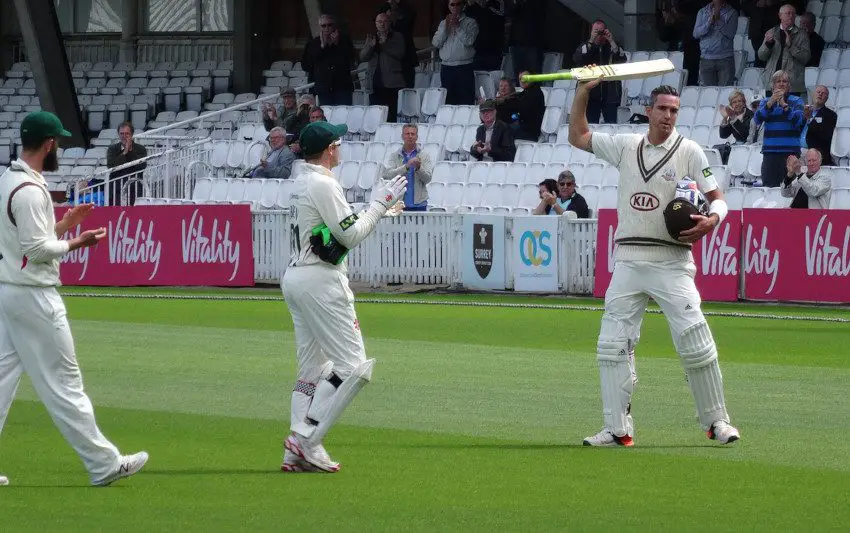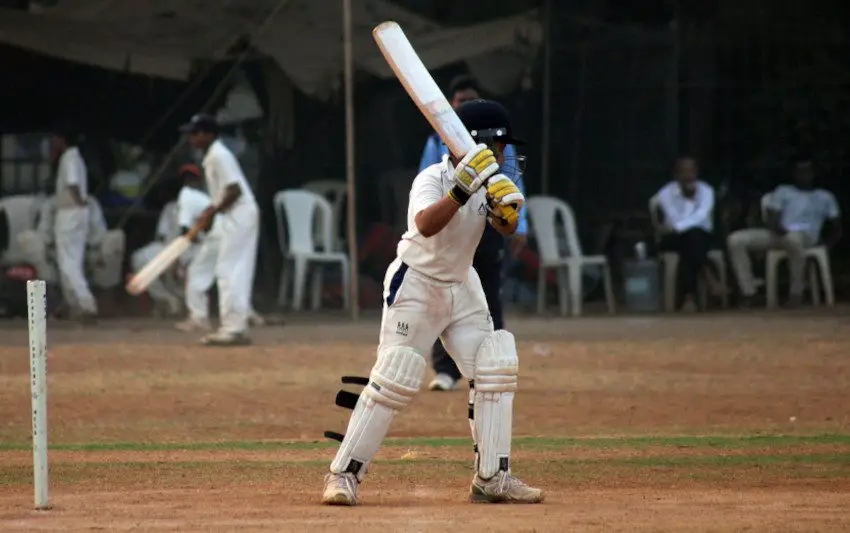Table of Contents
It’s an important part of the markings on a cricket pitch but what, exactly, is a popping crease?
What is a Popping Crease in Cricket?
The popping crease is the horizontal white line in front of the stumps on a cricket pitch. It is there to determine line decisions for both batters and bowlers.
The popping crease is the umpire’s aid when it comes to adjudicating on run out and stumping appeals and also for calling no balls when bowlers overstep.

Why is the Popping Crease so Called?
The term ‘popping crease’ relates to a previous innovation in cricket known as the popping hole. This was literally a hole in the ground where the batsmen had to place their bat in order to score a run.
To effect a run out, the fielding side had to get the ball into the hole first. This was quite a dangerous process so the hole was abandoned and the popping crease incepted.
Impacts of the Popping Crease on the Game
Unless the ball travels to the boundary, a batter must run to the opposite end of the pitch and ground their bat behind the popping crease if they are to record a run.
The popping crease is also used to judge on dismissals. If the fielding team appeal for a run out or stumping, the batter is not out if the bat, or a part of their body, is grounded behind the popping crease.
Note that the line itself ‘belongs to the umpire’. If the batter’s bat, foot or other part of their body is on the line but not behind it, they should be given out.
The popping crease also influences no ball calls. If a bowler’s front foot lands in front of the popping crease, the umpire shall call a no ball. Once again, the line is the umpire’s so the bowler must have some part of their foot behind the popping crease.
It’s for these reasons that the popping crease must be clearly marked by the ground staff. It needs to be visible to all officials, particularly the third umpire who will be adjudicating on run outs, stumpings and even no balls.
If there is no video technology in place, the umpires on the field will have to make all of these decisions. For cricket fans who only watch the games on TV, it may come as a surprise to learn that there is no DRS and no TV umpire adjudicating on line decisions such as these.
In most domestic games around the world, it’s all down to the two umpires who take to the field of play. For this reason, it’s vital that the popping crease is clearly marked.
In the early days of the popping crease, lines were scratched onto the wicket. In time, cuts came along to replace these. Because of the damage done to the wicket, lines of whitewash were eventually employed and this method is now used in modern day cricket.
Popping Crease FAQ
Difference Between The Popping Crease & The Bowling Crease
The bowling crease is another line that runs horizontally across a cricket pitch.The bowling crease sits behind the popping crease and the stumps are placed on it.
While they are both integral parts of the pitch and are placed in close proximity, the bowling crease and the popping crease have different roles to play.
What is the Length of the Popping Crease?
The laws of cricket do not cover the length of the popping crease. It should be clearly visible to both umpires and it could be unlimited, but it will need to cover the width of a pitch.
The popping crease will therefore tend to be at least ten feet in length.
What is the Distance Between the Popping Crease and the Stumps?
There is a law in the game that covers the length between the popping crease and the stumps. This states that the popping crease must be four feet (1.2 metres) in front of the bowling crease.
This is a strict measurement that ensures consistency and fair play for batters and bowlers when they are trying to comply with the laws that relate to the popping crease.
Conclusion
It’s nice to see some traditions holding steady in cricket. The popping crease is a historic term that refers to the very beginnings of the sport. It’s good that the popping hole has gone as it sounded quite dangerous, but the popping crease has moved in to take over and continue the name.
The most important law to remember regarding the popping crease is the one that says that the line belongs to the umpire. The batter must be grounded over the line while the bowler must have part of their foot behind the line so that they keep within their respective laws.


